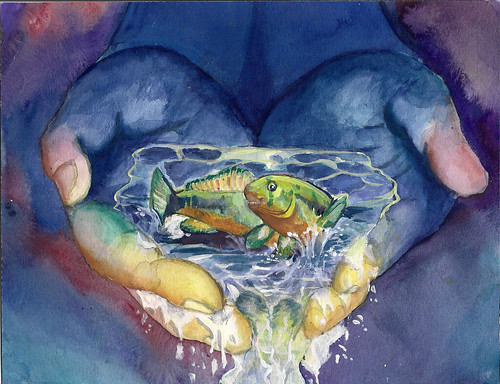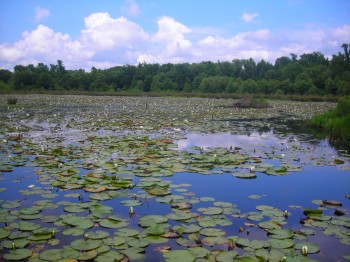Wow - another year has passed!
 |
| Kentucky arrow darter: credit David Starovoytov |
Many species are endangered by one huge problem: habitat loss. A really unwise and shortsighted resolution passed by the Legislature this spring threatens to sell nearly all our public lands. There are economic, environmental, ecological, philosophical, and ethical reasons why this is a really bad idea and the article sums the problem up nicely. Our public lands are already economically important, and even our wildlife refuges do not restrict oil production or other resources extraction. It's very important to remember that most resource extraction is very short term economic impacts. Often, there are costs that industry does not portray, such as acid-mine drainage, soil erosion and land slides, water pollution, and many many other problems that are damages that short sighted profiteering does not consider.
These lands are our natural and historical heritage, and any politician that thinks selling them off to the highest bidder is in the best interest of the nation should reconsider their position carefully. Please consider voicing your opinion to your politician and let them know you consider our battlegrounds, historical trails, forests, rivers, grasslands, oceans, caves and other resources too important to sell off to a foreign company to strip mine or log. Sign a petition and get involved before this ill conceived idea goes one step further.
The good news is that my thesis research is forging ahead. I want to understand how "modern" plant communities have changed over time, particularly in response to drought and/or temperature. This is best accomplished via palynology: the study of microscopic planty things. Pollen is very tough stuff and fossilizes well, so it is often the best choice for reconstructing what an ancient ecosystem looked like. The problems with pollen is it doesn't tolerate drying out and its only produced when plants flower. Some plants reproduce vegetatively and may not produce pollen.
 |
| Gus Engeling Wildlife Management Area |
I am conducting my research in North Central Texas. Texas is a big state, but it has no natural lakes. There are a few bogs and ephemeral ponds, but these are rare near SMU in Dallas. The closest bogs to Dallas are at Gus Engeling Wildlife Management Area, and I am coring the pitcher plant bog there to look for pollen. But when pollen can't be found, there is another trace plants leave behind... phytoliths!
Pytholiths are a bit of a mystery why plants produce them, but there are tiny crystals of opal-silica
| Sorghum phytolith |
By a stroke of luck, Dr. Reid Ferring serendipitously discovered one of the oldest archaeological sites in North America during the construction work of a reservoir spillway along the Elm Fork of the Trinity River. He discovered many Clovis era artifacts, fossil animals from the pleistocene, and in thin layered sediments from a small pond, pollen. As the last ice age faded 13,000 years ago, the spring feeding the pond dried up. Therefore, the pollen record does not continue forward into the Holocene. He has generously offered his research samples from 25 years ago for me to prospect for phytoliths! I'll write more about Dr. Ferring's research in my next blog.
Stay tuned as I spend the summer testing different places and layers of time for what plants grew when (and why it's important).

1 comment:
Very interesting
Post a Comment